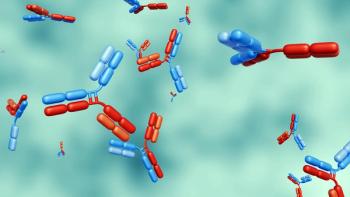
What a High-Dose Nusinersen Option Means for Future SMA Care
Key Takeaways
- The CHMP's positive opinion on higher-dose nusinersen may shift SMA treatment strategies, pending European Commission approval in January 2026.
- The DEVOTE study showed significant motor function improvements and reduced mortality risk with higher-dose nusinersen, influencing therapeutic outcomes.
Biogen reports CHMP support for an enhanced nusinersen regimen, signaling potential shifts in SMA treatment strategies and global regulatory decisions.
A positive opinion from the European Medicines Agency’s Committee for Medicinal Products for Human Use (CHMP) has moved a higher-dose regimen of nusinersen closer to approval in Europe, according to a Nov. 17, 2025 announcement by Biogen. The committee’s positive opinion signals a potential shift in treatment approaches for spinal muscular atrophy (SMA), the company noted in a press release (1).
On the back of the committee’s recommendation, a
SMA is a rare, genetic neuromuscular condition that affects people across age groups. With treatment landscapes evolving rapidly, decisions around dosing, long-term outcomes, and real-world effectiveness have become increasingly central for clinicians, researchers, and
“While we’ve seen great progress over the past decade, there is urgency to do more to address the clear unmet needs of the SMA community,” said Priya Singhal, MD, MPH, executive vice president and head of development, Biogen, in the press release (1). “The CHMP’s positive opinion for the high dose regimen of nusinersen represents a promising advancement in our commitment to support the evolving needs of individuals living with SMA and deliver therapies that can enhance patient outcomes.”
Biogen licensed the global rights to develop, manufacture, and commercialize nusinersen (brand name Spinraza) from Ionis Pharmaceuticals (1).
What study findings are shaping expectations for clinical impact?
The CHMP’s opinion is based on data from a multi-part Phase II/III study (DEVOTE), which explored safety, efficacy, and pharmacokinetics of a higher-dose regimen across treatment-naïve individuals and those who had been receiving the existing 12 mg dose. In treatment-naïve infants in the pivotal Part B cohort, investigators reported statistically significant improvements in motor function relative to a matched sham group drawn from an earlier study. Participants treated with the higher dose also experienced a reduction in the risk of death or permanent ventilation. These findings underscore the potential for dose intensity to influence therapeutic outcomes, an area of active discussion within neuromuscular research (1).
In Part C of the study, which followed individuals who transitioned to the higher-dose schedule after years on the standard regimen, investigators observed motor function improvements during the first 302 days of treatment. Because long-term durability and safety remain important considerations, the extension phase of the study continues to assess outcomes over time (1).
“The positive CHMP opinion for the high dose regimen of nusinersen is an important milestone for the SMA community,” said Eugenio Mercuri, MD, PhD, professor of Pediatric Neurology at the Catholic University, Rome, Italy, in the release (1). “Based on the results from the DEVOTE study and my experience with patients receiving this novel regimen, I am confident that high dose nusinersen has the potential to bring meaningful benefits to people living with SMA.”
How could a new dose option affect global regulatory decisions and care models?
Nusinersen is approved in more than 71 countries at its current dose, and the higher-dose regimen has recently received approval in Japan, according to Biogen. The company also stated in its release that regulatory reviews are underway in multiple regions, including the United States, for which a decision is expected in April 2026 (1). If additional regions move forward, health systems may see shifts in treatment planning, administration logistics, and long-term monitoring practices. Intrathecal administration, which requires specialized experience, will remain a key implementation factor for hospitals and clinics (3,4).
Safety observations from the study were generally aligned with both the known profile of nusinersen and common clinical events in SMA populations. Ongoing surveillance will continue to shape clinician guidance, particularly around procedural considerations and laboratory monitoring (1).
As more
References
1. Biogen.
2. Servais, L.; Day, J. W.; De Vivo, D. C.; et al. Real-World Outcomes in Patients with Spinal Muscular Atrophy Treated with Onasemnogene Abeparvovec Monotherapy: Findings from the RESTORE Registry. J Neuromuscul Dis. 2024, 11 (2), 425–442. DOI:
3. Finkel, R. S.; Ryan, M. M.; Pascual Pascual, S. I.; et al. Scientific Rationale for a Higher Dose of Nusinersen. Ann. Clin. Transl. Neurol. 2022, 9 (6), 819–829. DOI:
4. Cordts, I.; Lingor, P.; Friedrich, B.; et al. Intrathecal Nusinersen Administration in Adult Spinal Muscular Atrophy Patients with Complex Spinal Anatomy. Ther. Adv. Neurol. Disord. 2020, 13, 1756286419887616. DOI:
5. Finkel, R. S.; Day, J. W.; Pascual Pascual, S. I.; et al. DEVOTE Study Exploring Higher Dose of Nusinersen in Spinal Muscular Atrophy: Study Design and Part A Results. J. Neuromuscul. Dis. 2023, 10 (5), 813–823. DOI:
Newsletter
Stay at the forefront of biopharmaceutical innovation—subscribe to BioPharm International for expert insights on drug development, manufacturing, compliance, and more.





